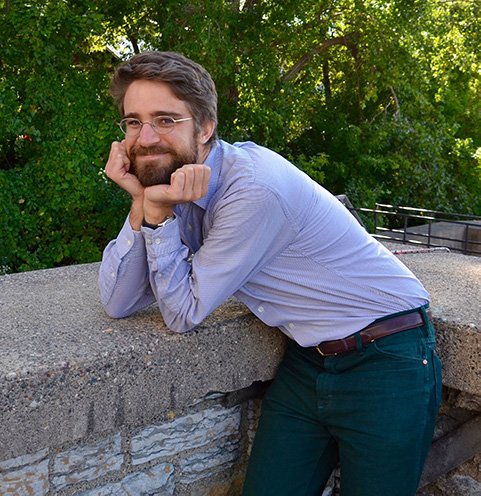Michael Heisel Defends PhD Thesis: Organization and scaling of coherent structures in the outer region of high-Reynolds-number turbulent boundary layers

Ph.D candidate Michael Heisel successfully defended his Ph.D in Civil, Environmental, Geo- Engineering on May 4th, 2020. He is advised by Michele Guala of the St. Anthony Falls Laboratory and Department of Civil, Environmental, and Geo- Engineering at the University of Minnesota.
Congratulations Dr. Heisel!
Organization and scaling of coherent structures in the outer region of high-Reynolds-number turbulent boundary layers
Michael Heisel, PhD Candidate in Civil, Environmental, and Geo- Engineering
Advisor: Michele Guala, Department of Civil, Environmental, and Geo- Engineering
Recent advances in high-Reynolds-number turbulence have suggested there is a general self-organization of coherent structures in the logarithmic and wake regions of boundary layer flows. The organization comprises large-scale velocity structures known as uniform momentum zones (UMZs) separated by thin internal shear layers (ISLs). While the velocity structures have been extensively studied in more specific forms such as momentum streaks, streamwise rolls, and bulges, the shear layers have received less attention outside the context of the hairpin packet paradigm. In the present thesis, the universality of this self-organization is evaluated using a novel field-scale particle image velocimetry (PIV) experiment in the logarithmic region of the atmospheric surface layer. The field measurements are validated using collocated sonic anemometry. The experiment reveals the same organization of UMZs and ISLs occurs for atmospheric flows. The properties of the UMZs and ISLs are then compared using ten PIV experiments and a direct numerical simulation, which together span a wide range of surface roughness and three orders of magnitude in Reynolds number. The UMZs unambiguously scale with the friction velocity and wall-normal distance in the logarithmic region, regardless of Reynolds number and surface roughness. The scaling behavior is in agreement with Prandtl's mixing length theory and Townsend's attached eddy hypothesis. The results show that the hypothetical eddies of the logarithmic law of the wall manifest in the structural organization of the flow. Separate analysis focusing on the smaller structures shows that the ISLs and large vortices are both governed by the friction velocity and Taylor microscale. Preliminary evidence suggests these ISL and vortex scaling behaviors both result from mutual interaction with the local large-scale UMZs, possibly through a stretching mechanism. Additional experiments in three dimensions are required to verify the dynamics. The overall findings support the universality of large-scale structures in the outer region and provide promising clues for better understanding scale interaction and energy transfer mechanisms.
